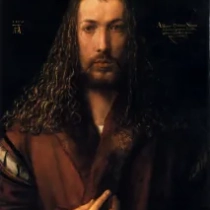 1497 - 1543
renaissance - northern
1497 - 1543
renaissance - northern
Description Hans, the Younger Holbein
Hans Holbein the Younger, born in Augsburg around 1497, navigated the tumultuous currents of the Renaissance, establishing himself as one of the era's preeminent portraitists. Holbein's artistry transcended borders, as he moved from Germany to England, leaving an indelible mark on the courts of Henry VIII.
Holbein's early training under his father, Hans Holbein the Elder, laid the groundwork for his later success. His journey to Basel marked a turning point, where he absorbed the influences of the Northern Renaissance. Holbein's portraiture, exemplified by works like "The Ambassadors," showcased his meticulous detail and proficiency in capturing the essence of his subjects.
In 1526, Holbein's sojourn to England proved fateful. His portraits of the Tudor court, including the iconic depiction of Henry VIII, positioned him as the foremost painter in England. Holbein's ability to render precise likenesses while infusing his subjects with psychological depth contributed to his popularity.
Holbein's versatility extended beyond portraiture. His work as a designer for royal pageants and theatrical productions highlighted his interdisciplinary skills. Additionally, his exploration of religious themes, seen in works like "The Body of the Dead Christ in the Tomb," demonstrated a nuanced understanding of spirituality.
The cultural and political upheavals of the Reformation posed challenges for Holbein. Despite his Catholic roots, he navigated the shifting religious landscape, producing both traditional religious art and works reflecting Protestant sensibilities.
Holbein's artistry reached its zenith during his second English sojourn from 1532. His portraits, including those of Thomas More and Anne of Cleves, showcased his ability to navigate the intricate dynamics of the Tudor court. Yet, his tenure was not without controversy, particularly his association with Anne Boleyn, which contributed to his brief exile.
Holbein's sudden death in 1543, possibly due to the plague, marked the end of a remarkable career. His legacy endured, influencing generations of portraitists. Holbein's ability to capture the complexities of his time, from courtly splendor to religious upheaval, ensured his lasting impact on the Renaissance and the cultural tapestry of Europe.





No Comments Yet...